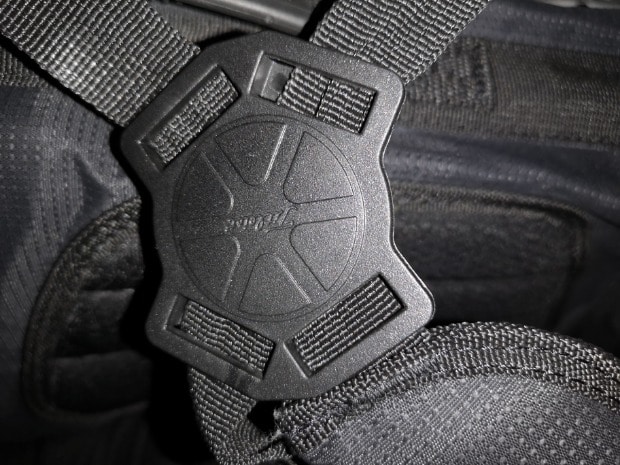Sand Wedge Vs Pitching Wedge: Choosing the Right Wedge
When it comes to golf clubs, the sand wedge and pitching wedge are two of the most important clubs in a golfer’s bag. While they may look similar, there are some key differences between the two.
The main difference between the sand wedge and pitching wedge is their loft and intended use. The sand wedge has a higher loft and is designed for shots out of the sand or other soft lies, while the pitching wedge has a lower loft and is better suited for approach shots and shots around the green.
In this the following sections, we’ll compare the sand wedge and pitching wedge to help you understand when to use each one.
Sand Wedge Vs Pitching Wedge: What Are The Differences?
Though both are part of a golfer’s arsenal of irons, they have distinct characteristics that make them suitable for specific situations on the golf course. Let’s delve deeper into the key aspects that differentiate these two clubs:
| Aspect | Sand Wedge | Pitching Wedge |
| Loft | Higher loft (typically 54-58 degrees) | Lower loft (typically 44-48 degrees) |
| Use | Designed for shots out of bunkers and soft lies around the green | Ideal for approach shots from fairways or roughs |
| Bounce | High bounce angle to prevent digging in sand | Low bounce angle for better turf interaction |
| Distance | Generally shorter distance due to higher loft | Generally longer distance due to lower loft |
| Trajectory | Higher trajectory, ideal for stopping quickly on greens | Lower trajectory, suitable for distance and control |
| Club Length | Typically shorter for better control in sand shots | Slightly longer for generating distance and accuracy |
| Versatility | Limited use beyond bunker shots and soft lies | Versatile club suitable for various approach shots |
Loft
The loft of a golf club refers to the angle of the clubface, which determines how high the ball will fly when struck. The sand wedge has a higher loft, typically ranging from 54 to 58 degrees.
This high loft helps the ball get quickly up into the air, making it the perfect club for shots out of bunkers and soft lies around the green.
On the other hand, the pitching wedge has a lower loft, usually between 44 to 48 degrees. This lower loft allows the ball to travel on a more direct trajectory, making it ideal for approach shots from fairways or roughs.
Use
Each golf club has a specific purpose, and the sand wedge and pitching wedge are no exception. The sand wedge is designed primarily for shots out of bunkers and soft lies.
Its wider sole and high bounce angle prevent it from digging too deep into the sand, making it easier to get the ball out of bunkers.
Moreover, the sand wedge’s loft and design help create a high, soft landing shot, allowing the ball to stop quickly on the green.
On the other hand, the pitching wedge is primarily used for approach shots to the green from various lies, such as fairways, roughs, or even light roughs around the green.
Its lower loft provides more distance and control, making it a reliable club for those critical approach shots.
Bounce
Bounce is an essential feature of wedges, especially the sand wedge. It refers to the angle between the leading edge and the lowest point of the sole.
A sand wedge has a high bounce angle, usually exceeding 10 degrees. The high bounce prevents the club from digging too much into the sand, helping golfers avoid getting stuck in bunkers and allowing for smoother sand shots.
On the other hand, the pitching wedge has a lower bounce angle. This lower bounce is beneficial when playing from fairways and tighter lies, providing better turf interaction and versatility in various situations.
Distance
Distance is a crucial factor when choosing the right club for a shot. Generally, the sand wedge delivers shorter distances compared to the pitching wedge.
The high loft of the sand wedge causes the ball to travel upward more than forward, resulting in shots that don’t travel as far.
On the other hand, the pitching wedge, with its lower loft, allows golfers to hit the ball farther with more roll once it lands. This difference in distance is essential to consider when planning approach shots to the green.
Trajectory
The trajectory of a shot describes the path the ball takes through the air. With its higher loft, the sand wedge produces a higher trajectory, creating shots that go up quickly and come down softly.
This is especially useful for landing the ball close to the pin when faced with obstacles like bunkers or water hazards.
In contrast, the pitching wedge generates a lower trajectory, making it suitable for shots that need to travel a longer distance with more control.
The lower trajectory also helps in managing shots in windy conditions, as it reduces the impact of the wind on the ball.
Club Length
Club length refers to the physical size of the golf club. Typically, the sand wedge is slightly shorter than the pitching wedge.
The shorter length of the sand wedge allows golfers to have better control over the club when hitting shots from sand and soft lies around the green.
In contrast, the pitching wedge is slightly longer, which contributes to generating more distance and accuracy on approach shots.
Versatility
While both the sand wedge and pitching wedge have specific purposes, the pitching wedge is generally considered a more versatile club.
The sand wedge is a specialist club designed primarily for bunker play and certain delicate shots around the green.
On the other hand, the pitching wedge can be used for a broader range of shots, including chip shots, pitch shots, and full swings. Its adaptability makes it a valuable tool for various situations on the golf course.
Sand Wedge and Pitching Wedge: What Are The Similarities?
When it comes to golf clubs, the sand wedge and pitching wedge share some similarities, yet each serves distinct purposes on the course.
Wedge Category
Both the sand wedge and pitching wedge belong to the wedge category of golf clubs, which are designed for short-distance shots and high loft.
Stainless Steel Construction
Both wedges are commonly made of stainless steel, which ensures durability and resistance to wear and tear, considering the variety of shots they encounter during a round.
Short Game Tools
Both clubs are essential components of a golfer’s short game arsenal, allowing players to execute precise shots around the greens and in challenging situations.
Wide Soles
Sand wedges and pitching wedges often feature wide soles, which help prevent the club from digging into the turf and provide better performance in soft sand or rough lies.
Control And Spin
Both clubs provide excellent control over the trajectory and spin of the ball, enabling players to stop the ball quickly on the green for better chances at making putts.
Pitching Wedge vs Sand Wedge: Which One Is Better?
The choice between a sand wedge and a pitching wedge depends on the golfer’s specific needs and the shot they want to execute. Both clubs serve different purposes on the golf course.
The sand wedge is designed with a higher loft, typically between 54 to 58 degrees, making it ideal for shots out of bunkers or fluffy lies around the green. Its wider sole helps prevent the club from digging too much into the sand, allowing for better contact and higher shots.
On the other hand, the pitching wedge has a lower loft, usually around 44 to 48 degrees, making it more suitable for approach shots from the fairway or rough. It provides greater control and distance compared to the sand wedge.
After all, neither club is inherently better than the other. Golfers should assess the situation and select the appropriate club to improve their chances of success on the course.
Frequently Asked Questions
Confused about which wedge to use in your golf game? Let’s clear things up with these concise FAQs about Sand Wedges and Pitching Wedges.
When Should I Use A Sand Wedge?
Use a Sand Wedge when your ball is in a bunker or buried in the sand. Its loft and wide sole prevent it from digging into the sand, making it easier to get out.
When Should I Use A Pitching Wedge?
Employ a Pitching Wedge for approach shots from the fairway, usually within 100 yards from the green. It provides better distance and precision for these shots.
Can I Use A Sand Wedge For Approach Shots?
While possible, it’s not recommended. Sand Wedges are primarily designed for sand play and may not give you the control and distance needed for approach shots.
Can I Use A Pitching Wedge In A Bunker?
Using a Pitching Wedge in a bunker is not advisable. Its lower loft and smaller sole can cause it to dig into the sand, making it harder to escape.
Which Wedge Is Better For Flop Shots?
For flop shots, the higher loft of a Sand Wedge makes it the better choice. Its design allows for higher trajectory shots that land softly on the green.
Should I Carry Both Wedges In My Bag?
Yes, having both the Sand Wedge and Pitching Wedge in your bag offers versatility on the course. They serve different purposes and can improve your overall game.





![How To Clean A Golf Bag? [Step-By-Step Guide] how-to-clean-a-golf-bag](https://giftedgolfers.com/wp-content/uploads/2023/06/how-to-clean-a-golf-bag-300x157.jpg)
